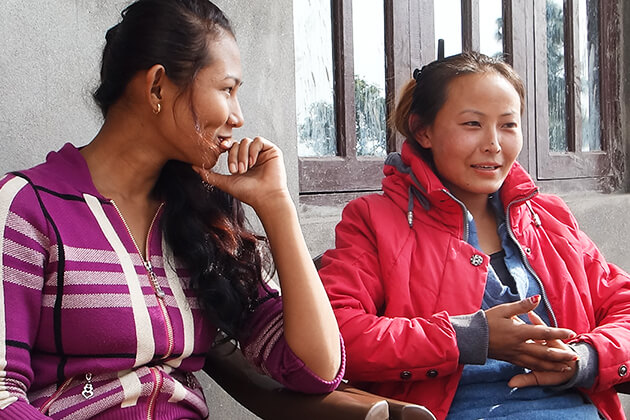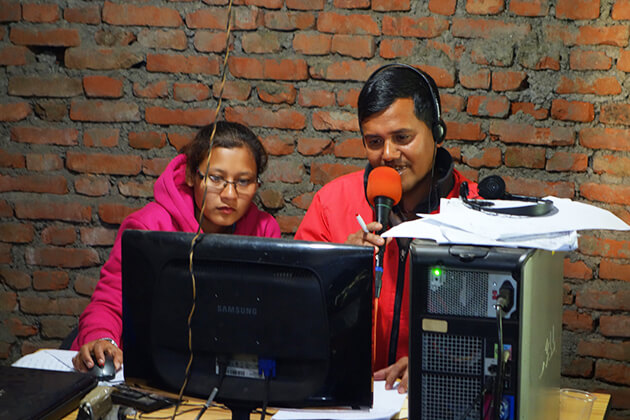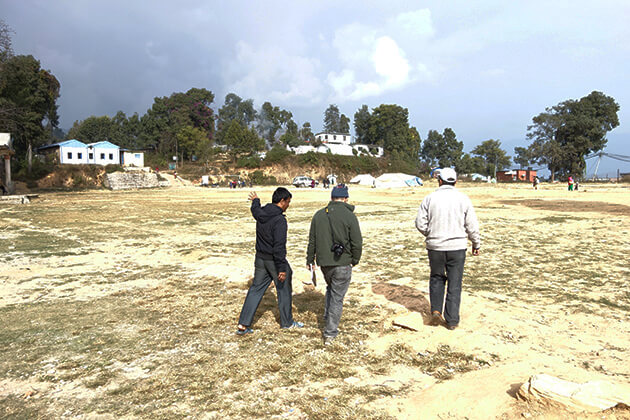
Host at Sindhu FM, a community radio in Chautara in one of the areas most affected by the earthquake. Photo: Andreas Sugar, IMS
Rebuilding of community radios in Nepal
The 7.8 magnitude earthquake that hit Nepal 25 April 2015 affected numerous radio stations in the 14 districts hit by the disaster. But despite lost equipment, destroyed buildings, chaos and personal tragedies, many radio stations managed to get back on air in a matter of hours or days
Nepal earthquake silences over 20 community radios
These radio stations became crucial channels for the dissemination of vital information to the local communities. Authorities and people relied almost entirely on the stations for conveying and receiving information about the situation, including what to do and not to do and where to go for aid, food and medicine.

Immediately after the earthquake, IMS supported a rapid assessment of the most urgent needs of the stations, thus ensuring that at least one radio was operational in each district. Initial assistance later led to a project aimed at addressing key issues of governance and accountability in disaster-affected areas.
A series of workshops brought together journalists from ten stations who were trained in order to produce the program Jamani in cooperation with Ujyaalo FM, a private radio network based in Kathmandu. Jamani is broadcast three times a week and covers issues related to earthquake and post-quake recovery. Impact of the program is real and substantial, with numerous examples of changes or advances at the local level.

Sindhu FM is a radio station that is based in Chautara, one of the areas most affected by the earthquake. Forced to evacuate its building, Sindhu broadcast from a field, first out in the open and later from a tent. They only moved into a new building in late November 2015, seven months after the earthquake.

Reports on Jamani led to the re-opening of a remotely located school, villagers living on unsafe land were moved to a secure location, people not affected by the quake returned funds they had received by mistake, and a blind man was reunited with his wife and child after months living in uncertainty about their fate.
The initial rapid response activities will come to an end in January 2016. However, everybody involved in the project believed that it would be essential to continue addressing issues of accountability during the reconstruction phase. IMS is exploring options for extending support for the project.




